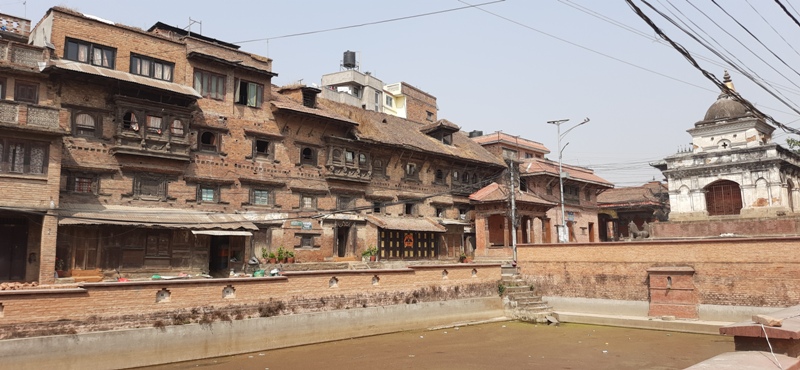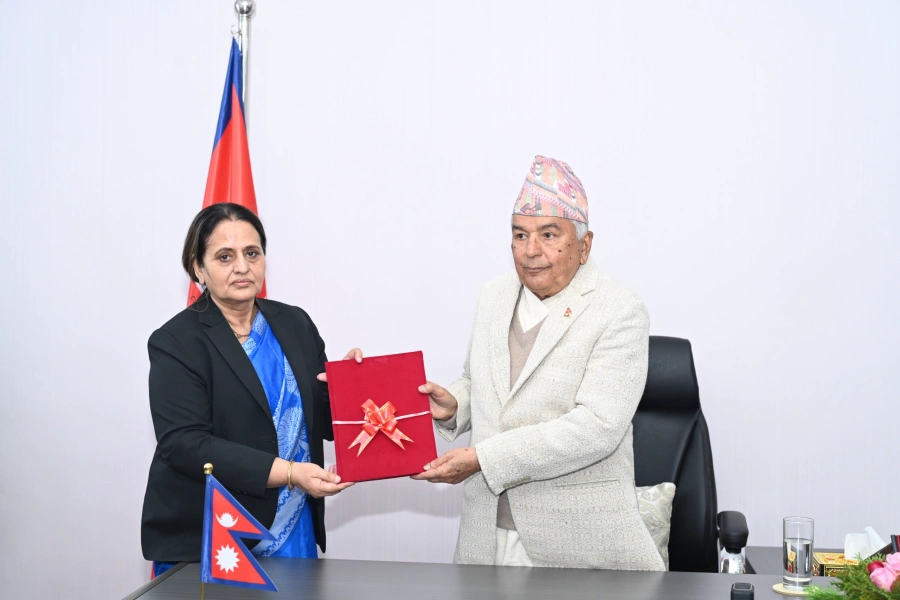Apart from the efforts on the conservation of the monuments, Kirtipurians are at their best in keeping the traditional values of the intangible cultural heritages.
Many civilizations in the world have disappeared because of natural and human-made disasters that occurred over time. Despite all the odds, the medieval hill town of Kirtipur has survived to contribute to keeping the Newa civilization of the Kathmandu Valley intact. Kirtipur, locally known as Kipoo, is one of the three medieval and ancient settlements of the Kathmandu Valley, which is nominated in the tentative list of the World Heritage Sites.
Kirtipur matching with its literal meaning of its name is indeed a ‘city of glory’. The present form of Kirtipur’s history, with its tangible and intangible heritages, can be traced to 11th century. The panorama of the Kathmandu Valley can be viewed from all the directions from the slopes and the top of the hill-town.

Nepal’s Department of Archeology had made a submission to the UNESCO on Jan 30, 2008 to include Kirtipur in the list of the World Heritage Sites. Since then, it has been kept in the tentative list of the UNESCO’s cultural heritage sites.
Locals effort in restoring Yanga hiti

The medieval settlement was developed with fort-like characteristics with 12 gates. According to Bir Bahadur Maharjan, a local intellectual, out of 12, locations of 11 gates, along with the city wall, have been traced. He further opined that the restoration of these city gates will help reclaim medieval architectural values of the hill town further.
According to Ramesh Maharjan, Mayor of Kirtipur, the municipality authority is continuously putting its efforts to retain and reclaim the authentic character of the medieval settlement. He has invited the young generation to participate in the conservation efforts of the heritage sites.
Kirtipur is an outstanding example of the medieval art and architecture of the Newa civilization of the Kathmandu Valley. Apart from the hundreds of the street shrines, the classified monuments including ChilanchoVihar, Jagat Pal Vihar, Buddha Dharma Sangha Shikhara, Baghbhairab Temple, Layaku (Durbar premises), Umamaheshvar Temple, Indrayani Pith, Chitu Bahal, Lokeshwar Shikhara, Buddha Temple, Chve Bahal and Kwe Bahal are the tangible heritages of Kirtipur.
The iconic temple of Bagh Bhairab, locally known as Dhumba Aaju, is one among the foremost popular temples dedicated to the God Bhairab resembling an angry tiger. This god is considered as the guardian of Kirtipur and therefore the locals call it Aajudya, which means the respected grandfather. The temple premise is the centre for locals to perform the important events of ceremonial rituals like rice-feeding, puberty and marriage.
The three-storied temple of Dhumba Aaju (Bagh Bhairab) is said to have been built by the Licchavi King Shiv Dev III during the period of 1099-1126. There are small shrines and stone idols in the rectangular courtyard with rest houses around it.
The two roofs of the temple are made from tiles while the third is roofed with gilt copper. Wooden posts with the carving of Hindu gods and goddesses adorn the temple additionally to support its roof. There are eighteen pinnacles within the temple: one on the primary roof, six on the center and eleven on the highest part. Currently, a debate goes on among the locals whether to replace the tiles of the primary and second roofs of the temple with the copper sheets.
Chilancho Vihar (monastery), a Buddhist shrine, is situated on the eastern side of Kirtipur. An inscription of Nepal Samvat 635 (1516 AD) found in the Chaitya is a proof for reclaiming authentic values of the Chiatya as one among the foremost important historical stupas of this region. In Nepal Bhasa, the word Chilan means immortal and the word Cho means hill. Therefore, its literal meaning is the immortal god situated on the top of the hill.

Uma Maheshwar temple (locally Kwacho Dega) is one among the important heritage sites of Kirtipur. This pagoda-style three-storied temple is situated at the best point (1414 m) of Kirtipur. Since this temple is at the highest of the hill town, one can enjoy picturesque view of the Kathmandu Valley and mountains like Langtang, Dorge Lakpa, Chobhu Bhamure, and Gaurishankar.
The temple was constructed in 1655 by Rautra Vishwanath Babu, a son of King Sidhhi Narsinga Malla. The temple had been destroyed in the 1832 earthquake. After remaining dilapidated for more than a century, it had been restored in 1933. The wooden doors, pillars, and beams are crafted with artistic figures of various gods and goddess like Astamatrika and Asta Bhairav. Similarly, erotic figures also are carved in wooden struts.
Most of the dwelling houses alongside the stone and brick paved narrow lanes of the medieval settlements have been renovated and reconstructed. They reflect the art and architectural values of the Newa civilization. Apart from the efforts on the conservation of the monuments, Kirtipurians are at their best in keeping the traditional values of the intangible cultural heritages as well.
Narayan Maharjan, a former teacher, says that the involvement of the young generation to go together with the efforts of the municipal authorities is required to launch advocacy and lobbying campaign so that Kirtipur would be included in the UNESCO World Heritage Sites.






































